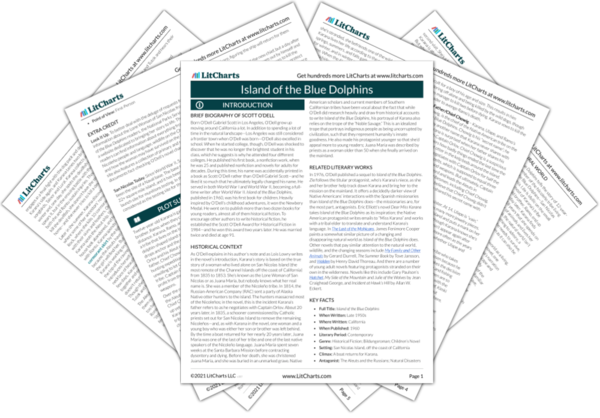Previous
Chapter 23
|
Previous
Chapter 23
|
Island of the Blue Dolphins: Chapter 24 Summary & Analysis |
Next
Chapter 25
|


Upgrade to unlock the analysis and theme tracking for all of Island of the Blue DolphinsIsland of the Blue Dolphins!
Get LitCharts A+